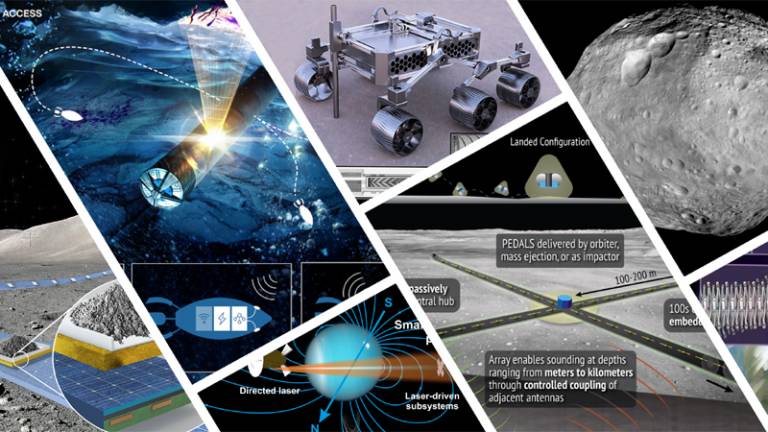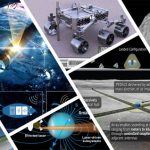Humanity has always been fascinated by the stars. For centuries, people have looked up at the night sky and wondered about the mysteries of the universe, the origins of life, and the possibility of other worlds. In the modern era, NASA has become a pioneering force in turning those questions into exploration, discovery, and innovation. As the leading agency in space research and exploration, NASA has transformed the way we understand our solar system, the universe, and even our own planet. Its work not only drives scientific knowledge but also inspires future generations to pursue curiosity, innovation, and discovery.
NASA’s mission goes beyond launching rockets and sending astronauts into space. It is about expanding the boundaries of human knowledge, developing cutting-edge technology, and ensuring that the benefits of space exploration reach all of humanity. Through research, collaboration, and education, NASA continues to explore the unknown while preparing society for the challenges and opportunities of the future.
Why Is Space Exploration Important for Scientific Discovery?
Space exploration is essential for understanding the fundamental laws of the universe. By studying planets, stars, and galaxies, scientists gain insights into phenomena that cannot be replicated on Earth. NASA’s missions have enabled discoveries about the origins of the solar system, the behavior of black holes, the formation of galaxies, and the nature of cosmic radiation.
Robotic missions, such as space telescopes and planetary probes, allow scientists to collect data from distant locations without risking human life. For example, telescopes orbiting Earth can detect faint signals from billions of light-years away, revealing the structure and evolution of the universe. Robotic landers and rovers explore planetary surfaces, analyze soil and atmosphere, and search for signs of water or life. Each mission expands our understanding of space while providing crucial information for future human exploration.
Space exploration also helps answer questions about Earth. By observing other planets, scientists learn about climate patterns, geology, and atmospheric processes. These insights improve our understanding of natural phenomena such as climate change, weather patterns, and geological hazards. The knowledge gained from space research has practical applications on Earth, making our planet safer, more sustainable, and better understood.
How Does NASA Drive Technological Innovation?
NASA’s work in space exploration drives innovation that benefits industries and communities worldwide. Developing spacecraft, satellites, and scientific instruments requires pushing the limits of engineering and technology. These advancements often find applications far beyond space missions.
For example, NASA’s research has led to improvements in materials science, robotics, telecommunications, and computing. Lightweight materials developed for spacecraft are now used in medical devices, sports equipment, and transportation. Precision robotics designed for planetary exploration has contributed to surgical instruments and automated systems on Earth. Even satellite technology, originally developed for space missions, is now crucial for global communications, navigation, weather forecasting, and environmental monitoring.
The agency’s focus on innovation encourages collaboration between scientists, engineers, and private industries. Public-private partnerships accelerate the development of new technologies, reduce costs, and increase the pace of discovery. NASA’s work ensures that space exploration is not only a frontier for knowledge but also a catalyst for practical innovation that improves everyday life.
What Role Do Human Space Missions Play in Exploration?
Human space missions are a cornerstone of NASA’s efforts to explore the cosmos. Sending astronauts into space allows for direct observation, experimentation, and problem-solving in ways that robotic missions cannot fully achieve. Human presence in space also inspires society and demonstrates the potential of human ingenuity and resilience.
Astronauts aboard space stations, such as the International Space Station, conduct experiments in microgravity that are impossible on Earth. These experiments lead to breakthroughs in medicine, biology, physics, and materials science. For instance, studying how cells and tissues behave in space provides insights into disease progression, drug development, and tissue engineering.
Beyond scientific research, human spaceflight prepares society for future exploration of the Moon, Mars, and beyond. NASA develops life support systems, radiation protection, and sustainable living solutions that will enable humans to survive and thrive in extraterrestrial environments. Each mission builds knowledge that brings long-term goals, such as establishing lunar bases or sending humans to Mars, closer to reality.
How Does NASA Foster International Collaboration?
Space exploration is a global endeavor. NASA actively collaborates with other space agencies, research institutions, and universities around the world. International partnerships expand resources, share expertise, and enhance scientific outcomes. Collaborative missions, such as the construction and operation of the International Space Station, demonstrate that humanity can achieve remarkable results when nations work together toward a common goal.
Global collaboration also allows for sharing data and discoveries that benefit all of humanity. For example, satellites monitoring Earth’s climate provide essential information to countries worldwide, aiding in disaster response, resource management, and environmental protection. By working together, nations can tackle challenges that transcend borders, such as climate change, space debris, and planetary defense.
Collaboration fosters knowledge exchange and education. Students and scientists from different countries gain opportunities to participate in research, internships, and training programs, building a global workforce capable of advancing space exploration and science. NASA’s collaborative approach ensures that space missions not only expand knowledge but also unite humanity in the pursuit of discovery.
What Are NASA’s Goals for Future Generations?
NASA’s commitment to future generations goes beyond immediate missions. The agency focuses on inspiring young people to pursue careers in science, technology, engineering, and mathematics. Educational initiatives, outreach programs, and public engagement foster curiosity and creativity in students worldwide. By investing in education, NASA ensures that the next generation of scientists, engineers, and explorers are prepared to carry humanity further into space.
Future exploration goals include returning humans to the Moon, establishing sustainable lunar habitats, and preparing for crewed missions to Mars. These ambitious objectives require long-term planning, technological innovation, and global collaboration. NASA’s vision is not only to explore distant worlds but also to ensure that the knowledge gained benefits society, fuels innovation, and inspires people to dream bigger.
Moreover, NASA emphasizes sustainability in space exploration. Developing technologies for resource utilization, renewable energy, and closed-loop life support systems ensures that missions are environmentally responsible. By prioritizing sustainability, NASA protects both Earth and space environments for future generations.
How Does NASA Contribute to Understanding Climate and Earth Science?
NASA’s work extends beyond outer space. Satellites and observational instruments monitor Earth’s atmosphere, oceans, land, and climate systems. This research is critical for understanding natural phenomena, predicting weather events, and addressing climate change.
Through Earth observation, NASA collects data on global temperatures, greenhouse gas concentrations, deforestation, sea-level rise, and natural disasters. Scientists use this information to model climate scenarios, assess environmental risks, and inform policy decisions. The insights gained from these missions help governments, organizations, and communities take proactive measures to protect the planet.
NASA’s climate research also informs sustainable practices in agriculture, urban planning, and resource management. By linking space exploration with Earth science, the agency demonstrates that studying the cosmos and understanding our home planet are deeply interconnected.
What Is the Impact of NASA’s Discoveries on Society?
The discoveries and innovations resulting from NASA’s work have a profound impact on society. Space exploration inspires wonder and curiosity, encouraging people to ask big questions and seek knowledge. Scientific breakthroughs, technological advancements, and global collaborations improve quality of life, enhance education, and drive economic growth.
The knowledge gained from studying other planets, stars, and galaxies deepens humanity’s understanding of existence and our place in the universe. It also prepares society for potential future challenges, such as asteroid impacts, space resource utilization, and long-term sustainability of human life beyond Earth.
NASA’s work also reinforces the importance of scientific research and critical thinking. By sharing discoveries, engaging the public, and fostering educational initiatives, the agency ensures that scientific literacy and curiosity remain strong in future generations.
How Does NASA Inspire Future Generations of Explorers?
Inspiration is one of NASA’s most enduring contributions. The stories of astronauts, the images of distant planets, and the achievements of robotic missions ignite imagination and motivate young people to pursue careers in science and technology. Educational programs, virtual experiences, and interactive content make space exploration accessible to students worldwide, fostering a lifelong passion for learning and discovery.
By highlighting the possibilities of human achievement, NASA encourages the next generation to dream boldly, innovate fearlessly, and approach challenges with creativity. The agency’s work demonstrates that exploration is not limited by age, geography, or background—curiosity and determination can lead to extraordinary accomplishments.
Conclusion
NASA’s contributions to space exploration are invaluable for scientific discovery, technological innovation, and societal progress. By studying the universe, advancing human spaceflight, fostering international collaboration, and inspiring future generations, NASA ensures that humanity continues to reach for the stars.






